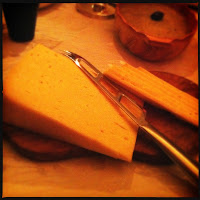Young and bustling Exarchia – or Anarchia – as some like to call it, isn't exactly among the top-10 recommendations in your regular travel guide. Indeed, Exarchia is a traditional hotspot for riots and left-wing protest walks. The African prostitutes along Themistokleou Rd. and the junkies in Solomou Rd. don't add up to the standard cliché postcard snapshot of ancient Athens either. Still, when you stroll across green Exarchia square and catch the smell of Souvlaki and burnt waste, the ever-persistent noise of the motorbikes, the laid-back cafés, rock pubs and Mezedopolias, you'll get an idea of real Athens, beyond Akropolis, bad Gyros and kitschy souvenirs. But not only is Exarchia the best place to party on a Saturday, it also boasts some of the most authentic, down-to-earth and best places to explore the wonders of real Greek mezes.
Among the fine Mezedopolias in that special part of town, it's hard to pick a favourite. But when it comes to coolness and pure authenticity, nothing can beat Y Zoula near the top end of Koletti Road. And seriously, there's nothing that can go wrong with an owner, who goes by the name of Nektarios Mystikos ("yes, that's my real name"). Nektarios' concept is plain and simple: good, high quality mezes sold at a price the many students in Exarchia (the university is just around the corner ...) and the young families in the neighborhood can afford. And Ouzo, lots of Ouzo. Nektarios is proud to showcase a whole cupboard full of the finest brands from all over Greece. Honestly, if you're looking for a place to sample some REALLY good Ouzo, come to Y Zoula. Nektarios is a pro when it comes to Ouzo, he can tell you a story about every brand, how it is produced, which island it is from etc. Y Zoula doesn't call itself a "Rakadiko", a "Raki Pub" for nothing. Being an avid fan of Rembetiko, he'll also be able to tell you a story about the "Greek blues", too.
Y Zoula opens in the afternoon, but it's definitely a place you should go to in the evening. The crowd is rather young, mostly students, and the atmosphere is informal and cheerful with Rembetiko or Greek Rock Music playing on the stereo. You'll easily make new friends around here when the tables are full with the small plates and the Ouzo is flowing.
The prices are absurdly low, considering the quality and the atmosphere you get. Most mezedes are between 2,50 € and 5 € and come with a basket of bread. The Ouzo's just as cheap and comes in small or big bottles (depending on your plans for the night), served with water (and ice if you like).











